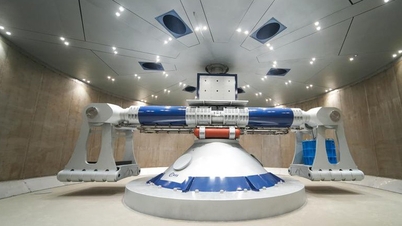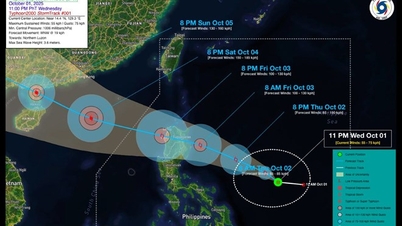A laser-based system developed by a team of Chinese scientists could potentially allow the country to monitor foreign military satellites with unparalleled precision, according to the South China Morning Post.
A team of scientists from the Aerospace Information Research Institute of the Chinese Academy of Sciences has achieved a leap in optical imaging technology with a powerful laser that could redefine global standards for surveillance, the South China Morning Post reported on February 20.
The technology could potentially allow China to monitor foreign military satellites with unparalleled precision or distinguish details as small as a human face from low Earth orbit.

A team of Chinese researchers has deployed an advanced synthetic aperture lidar system for their experiment on Qinghai Lake.
Photo: SCMP screenshot
The team captured images with a camera with millimeter-level resolution from a distance of more than 100 kilometers, something previously thought impossible. The new breakthrough was described in a study published in the Chinese journal Laser last week.
The experiment, conducted on Qinghai Lake, a vast body of high-altitude water in remote northwest China, involved the team deploying an advanced synthetic aperture lidar system, a type of laser-based imaging system with a wide field of view.
Mounted on the north shore of Qinghai Lake, the camera aimed at reflective prism arrays placed 101.8 km away in clear atmospheric conditions with high visibility, minimal cloud cover and steady winds.
The camera can quickly detect details as small as 1.7 mm and tell the distance to objects with an accuracy of 15.6 mm, a level of detail 100 times better than today's best spy cameras and the best telescopes based on traditional lenses.
The Chinese team used several technological innovations to achieve this groundbreaking technological advance. By splitting the laser beam across a 4x4 microlens array, they expanded the system’s optical aperture from 17.2 mm to 68.8 mm, overcoming the usual trade-off between aperture size and field of view.
The team also used a specialized laser module to send signals with frequencies exceeding 10 gigahertz. This provided good range resolution, allowing for precise distance measurements, according to the South China Morning Post .
Source: https://thanhnien.vn/trung-quoc-phat-trien-camera-do-tham-manh-nhat-the-gioi-185250222093312673.htm



![[Photo] Hanoi morning of October 1: Prolonged flooding, people wade to work](https://vphoto.vietnam.vn/thumb/1200x675/vietnam/resource/IMAGE/2025/10/1/189be28938e3493fa26b2938efa2059e)
![[Photo] Keep your warehouse safe in all situations](https://vphoto.vietnam.vn/thumb/1200x675/vietnam/resource/IMAGE/2025/10/1/3eb4eceafe68497989865e7faa4e4d0e)
![[Photo] President of the Cuban National Assembly visits President Ho Chi Minh's Mausoleum](https://vphoto.vietnam.vn/thumb/1200x675/vietnam/resource/IMAGE/2025/10/1/39f1142310fc4dae9e3de4fcc9ac2ed0)
























































































Comment (0)